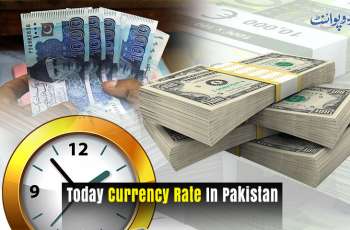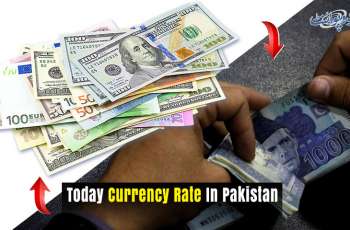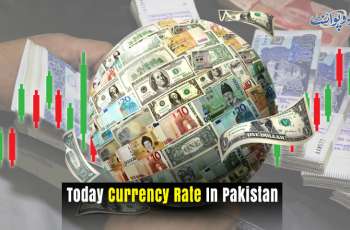Coronavirus-driven uncertainty on the global financial markets and the unstable US dollar have driven investors to jump on buying gold, which has resulted in rapid price rise, experts told Sputnik, adding that concerns over a possible second wave of the pandemic could mean that the precious metal will continue to grow in value
MOSCOW (Pakistan Point News / Sputnik - 14th May, 2020) Coronavirus-driven uncertainty on the global financial markets and the unstable US dollar have driven investors to jump on buying gold, which has resulted in rapid price rise, experts told Sputnik, adding that concerns over a possible second wave of the pandemic could mean that the precious metal will continue to grow in value.
Gold prices will likely remain volatile in response to the range of factors impacting the market. The precious metal was trading in March at around $1,470 per troy ounce at its lowest price and has grown ever since. On May 13, gold was trading at roughly $1,710 per troy ounce, according to the online portal goldprice.org.
Investors' rush to purchase gold appears to be a reaction to the fluctuations in the world's reserve currencies and the longer the market uncertainty remains, the more the gold prices will grow.
US FED CASH INFLUX, SECOND WAVE OF PANDEMIC TRIGGER GOLD PRICE GROWTH
In March, the US Federal Reserve announced that it would release nearly $4 trillion as subsidies to businesses and households in an unprecedented move to help the US economy, which is facing its worst downturn since the Great Depression.
This has been a major trigger for investors, who are fearing the move will lead to significant inflation, to start buying gold. When the world's reserve currencies, such as the US dollar, begin to weaken, investors often turn to gold, consequently raising its value.
"The corona 'mega bail-out' and the 'rescue policies' of the central banks are causing money supply to rise sharply - and we can expect rising goods prices and a loss of purchasing power of the official currencies. Gold is one way to protect yourself from devaluation. Its purchasing power cannot be reduced by central bank policy, nor - unlike bank deposits - does it bear any risk of non-payment/default," Professor Ansgar Belke, an associate senior research fellow at the Centre for European Policy Studies and director of the Institute of Business and Economic Studies at the University of Duisburg-Essen, told Sputnik.
Fresh US unemployment data was published on May 7, which indicated that the coronavirus disease pandemic cost the US economy 20.5 million jobs in April - the steepest drop in jobs since the Great Depression. Gold responded on the day by increasing in value, with spot gold up 2.2 percent to $1,722.49 per ounce, and gold futures gaining 2.6 percent, trading at $1,731.90.
Gold prices usually do not show a direct correlation with production levels. Closures of certain gold mines, such as sites in South Africa, amid lockdown measures to curb the spread of COVID-19, will not, therefore, have a considerable effect on prices.
"Gold isn't rising because of the mine shutdowns. We expect many of these mines to be back online before the second half of 2020. It turns out to be difficult to forecast how high the gold production deficit will be for each mine that comes back online and the implications will be different for each gold miner, but unlikely to move the price of gold either way," Belke said.
According to Terrance Odean, Rudd Family Foundation Professor and Chair of the Finance Group at the University of California, Berkeley's Haas School of Business, the price of gold is unlikely to fluctuate due to the drop in production because the vast majority of gold is not consumed.
"Obviously prices are determined by supply and demand. A significant reduction in supply could increase prices. However, very little gold is consumed. Thus, production tends to add slowly to total supply. Demand by individuals for gold is highly volatile and often driven by world economic and political events as well as trend chasing," Odean told Sputnik.
Belke explained that the popularity of gold among exchange-traded funds (ETF) on the stock exchange is because investors see it as a hedge against inflation. In terms of demand, a fall in China and India has been balanced by the growing interest of ETFs, the academic said.
"The coronavirus crisis (not least because of the associated production and logistical problems) seems to have had a particularly negative effect on physical demand for gold in India and China. At the same time, it has been shown that the trend to buy gold through gold ETFs is still on the upswing, even during the crisis, and that gold is clearly becoming more attractive to private and institutional investors - as inflation protection or portfolio insurance," the economist explained.
According to the US-based economist Terrance Odean, gold offers little for long-term investors who are based in countries with stable currencies.
"In my opinion, gold is not a particularly good hedge for people who live in politically stable countries with sound currencies," he noted.
On the contrary, Belke believes that gold has proven to be a safe investment in times of crisis, not only for private investors but also for national central banks, which are constantly enlarging their gold reserves. The five countries with the largest gold reserves are the US, Germany, Italy, France, and Russia.
"Gold is rising, instead, because it's a proven safe haven in uncertain times ... Current and, to my mind, reliable forecasts of the gold price for the fourth quarter of 2020 find themselves between $1,459 and $1,931 per troy ounce," Belke said.
In his 2012 monograph Survival Investing, US financial expert John R. Talbott stated that gold must reach $1,750 per troy ounce for it to be suitable as a long-term investment, in order to protect from currency devaluation and inflation.
Belke stated that if gold can consolidate its position at $1,750 per troy ounce over the next few weeks, it will create a new benchmark that will be protected from rapid market shocks.
"I think the key is whether gold is able to consolidate above the $1,750 range for a couple of weeks. If so, it will have created a new base which may prevent the short-sellers from dominating the gold market," Belke said.
Investors are not willing to reduce their net long investments in gold to less than five years, which means they are unwilling to let go of their so-called safe haven, he added.
"Please take into account and observe closely that any gold royalty companies and gold producers are currently trading at over 200 percent above their net asset value. And, if you look at how non-commercial long positions in gold are trading right now, you will notice that these traders are reducing their net long positions in gold (which were at a 10-year high recently). On its way down from the 10-year high in long contracts, however, the gold price found some support around the 5-year trend line. This indicates that traders aren't quite ready to let go of their safe haven long gold positions just yet," the academic stated.
The future of the gold market also depends on what the US Federal Reserve decides to do regarding interest rates in the coming weeks. Chairman Jerome Powell in a speech on Wednesday said that the Federal Reserve, as yet, is not considering establishing negative interest rates, similar to those levied by the European Central Bank.
On Tuesday, President Donald Trump said that the US should accept the "gift" of negative interest rates, particularly amid the current economic disruption caused by the COVID-19 outbreak. If the US were to implement negative interest rates on excess reserves, a ploy often used to prompt banks to increase lending, it is expected that the price of gold could rise even further.



